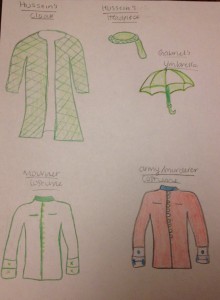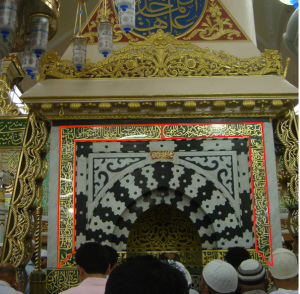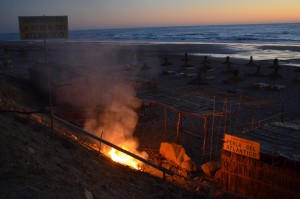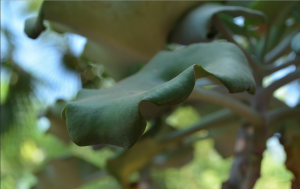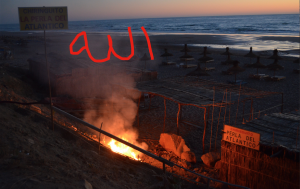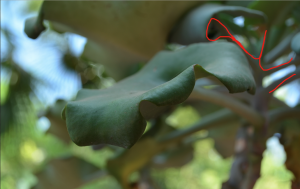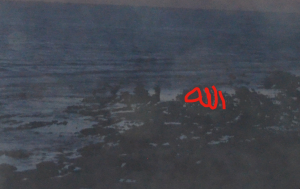Week 5: The Ritual Drama of Ta’ziyeh
Medium: Colored Pencils
For my third art representation, I wanted to focus on aspects of the Ta’ziyeh, which is the ritual play popular in Iran that reenacts the martyrdom of Hussein. The play acts not only as a means of bringing together the community to mourn the death of Hussein but also as an act of remembrance of God, a Dhikr of sorts. However, the production of the play naturally overtime also lent itself to a degree commercialization, as noted in the reading by Chelkowski. In the excerpt we read for section, Chelkowski notes that the Ta’ziyeh “became a commercial enterprise, centered not in the cities which at that time were given to imitating Western art forms, but rather in the rural areas” (Chelkowski 9). Though not explicitly discussed in this context by Chelkowski, one aspect of the Ta’ziyeh that seemed very prone to commercialization was the designing of costumes for the plays. Based on this, I decided to (attempt to) draw a fashion line of clothing relevant to the Ta’ziyeh based on the descriptions given by Chelkowski. I used colored pencils for my drawings because I wanted to use bright, bold and definitive colors to hopefully express, through the clothing of the Ta’ziyeh, the level of passion and emotion that is central to the play. I used the description of the costumes given on pages 9 and 10 of the Chelkowski reading as the basis for my drawings. As Chelkowski notes, characters that are “good” wear costumes that have green and white. In contrast, characters that are “bad” are dressed in red clothing to symbolize their evil. Gabriel is represented by the carrying of an umbrella to represent that he came down from heaven. As protagonists, Hussein, Gabriel, and the mourning audience costumes are all in green and white to represent their goodness. In contrast, I colored the army’s costumes red to symbolize the evil of their actions. I also made the costumes for the mourners and the army to look similar as to represent the fact that in many ta’ziyeh plays, the armymen and the mourners are roles both played by the audience.
